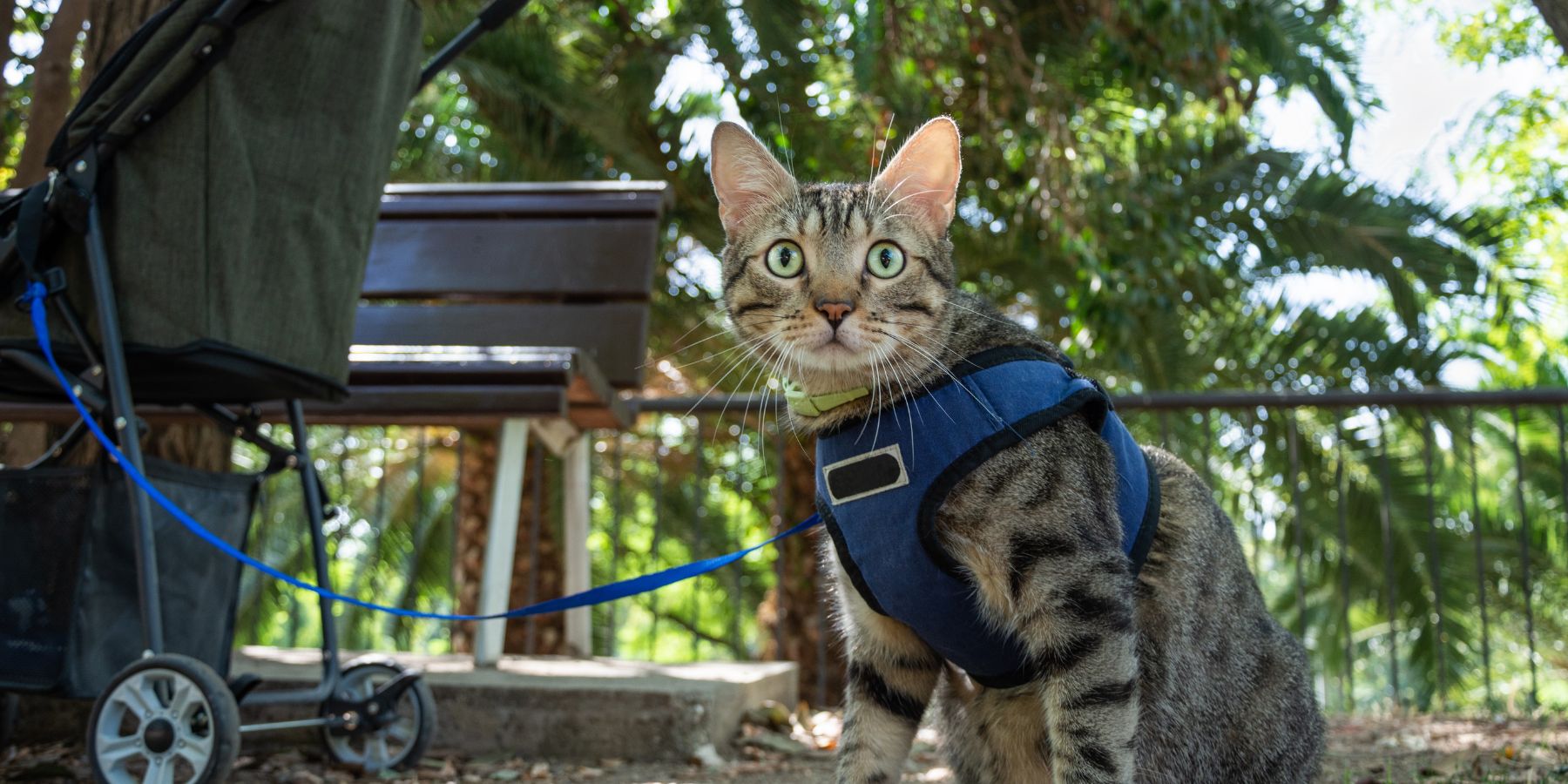Choosing the right harness for your feline friend is not just about comfort and fit; the durability of the material is equally important. A durable harness ensures the safety and security of your cat during outdoor adventures. In this comprehensive guide, we'll explore the various materials used in cat harnesses, focusing on their durability and suitability for different types of cats.
Understanding Harness Materials
When it comes to cat harnesses, several materials are commonly used, each offering different levels of durability and comfort. Let’s delve into the most popular ones:
Nylon
Nylon is one of the most common materials used in pet harnesses. It’s known for its strength and lightweight nature. Nylon harnesses are often affordable and come in a variety of colors and patterns. They are also easy to clean, making them a practical choice for everyday use.
Mesh
Mesh harnesses are popular for their breathability, which is particularly beneficial in warmer climates. They are typically made from a lightweight, soft material that reduces the risk of chafing, providing a comfortable fit for your cat. While mesh offers comfort, its durability depends on the quality of the weave and the material used.
Neoprene
Neoprene is a soft, flexible material often used in combination with nylon for added comfort. It’s known for being water-resistant and quick-drying, making it a good choice for cats who enjoy the outdoors, regardless of the weather. Neoprene harnesses are durable and maintain their shape and comfort over time.
Leather
Leather harnesses are less common but are appreciated for their durability and classic look. High-quality leather can last for years if properly cared for. However, they might require more maintenance than nylon or mesh harnesses and are often at a higher price point.
Polyester
Polyester is another frequently used material in cat harnesses. It’s known for its resistance to stretching and shrinking, maintaining its shape over time. Polyester harnesses can be a good balance between durability, comfort, and affordability.
Choosing the Best Harness for Your Cat
When selecting the best harness for a cat, consider your cat's lifestyle. Active cats or those who spend a lot of time outdoors may benefit from more durable materials like nylon or leather. For cats with sensitive skin or those living in hotter climates, a breathable material like mesh might be more appropriate.
Caring for Your Cat's Harness
Regardless of the material, proper care can extend the life of a cat harness. Regularly inspect the harness for signs of wear and tear, especially if your cat is a frequent explorer. Follow cleaning instructions specific to the material to maintain its quality and durability.
FAQs
Q: How often should I replace my cat's harness?
A: Replace the harness if you notice any signs of wear or fraying, or if the buckles are not functioning properly. Regular checks are recommended.
Q: Is a reflective material important for a cat harness?
A: Reflective materials can enhance visibility and safety, especially if you walk your cat during dusk or dawn.
Q: How do I clean a leather cat harness?
A: Use a damp cloth to wipe it down and apply a leather conditioner occasionally to keep it supple.
In conclusion, the material of a cat harness plays a crucial role in its durability and suitability for your cat. From the strength of nylon to the comfort of mesh and the durability of leather, each material offers unique benefits. Consider your cat's needs, lifestyle, and the climate you live in when choosing a harness. With the right care and selection, a durable cat harness can provide both safety and comfort for your feline companion's outdoor excursions.


